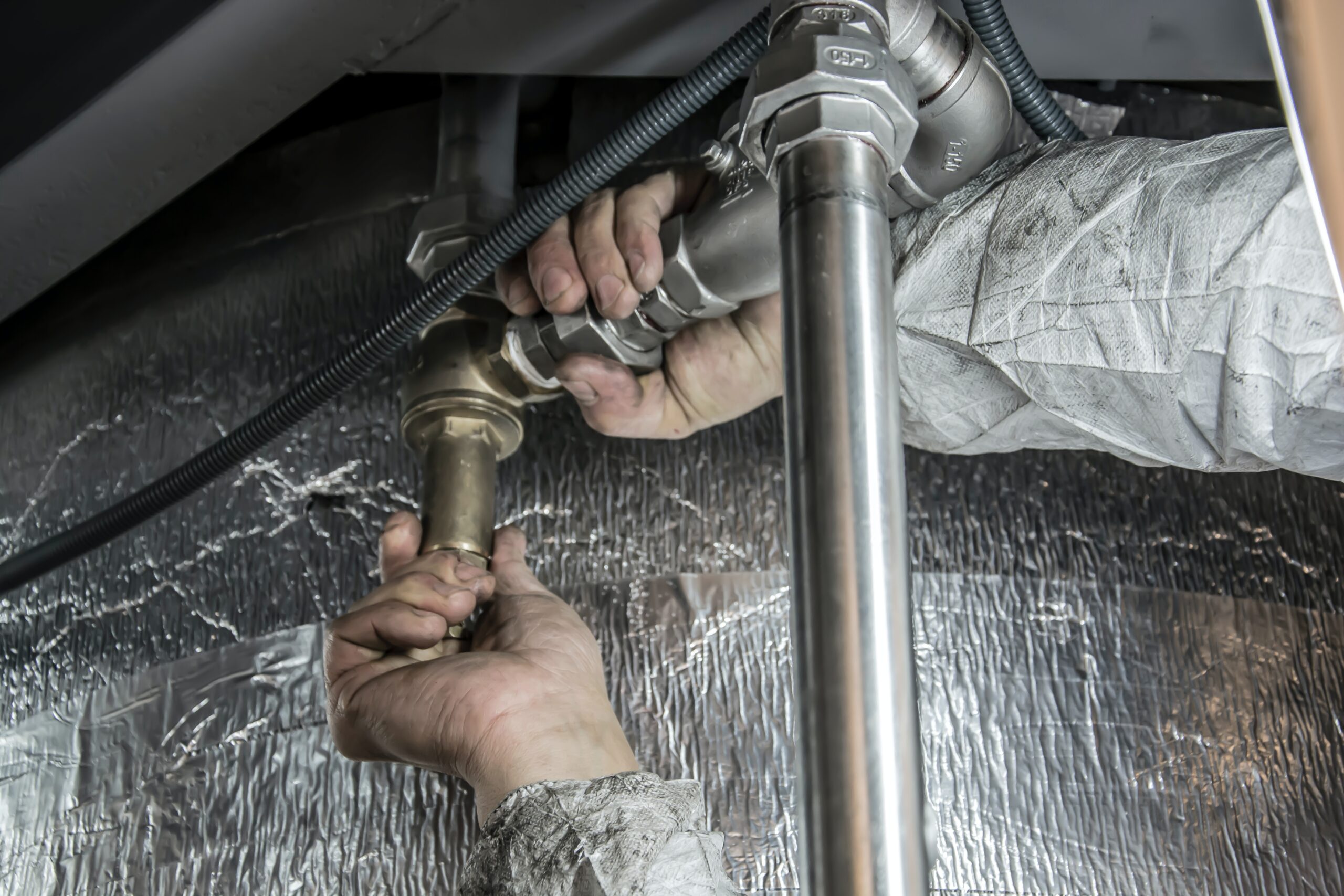1. Know where the main water shut-off valve is located
The first step to managing your home plumbing is knowing how to shut off the water supply in case of emergencies such as leaks or burst pipes. Locate the main water shut-off valve and learn how to turn it off properly. You may need a wrench or other tool depending on your plumbing system.
2. Find and label all individual fixture shut-off valves
In addition to the main water shutoff valve, there are usually individual valves for each fixture (sinks, toilets, etc.) throughout a home. Familiarize yourself with their locations and label them for easy identification during emergencies or when needing repairs.
3. Learn basic plumbing repairs
You can save money by handling minor plumbing repairs yourself, such as fixing a leaky faucet or unclogging a drain. Before tackling a repair job, research online tutorials or consult home improvement books. You could also consider seeking advice from professionals like Dan’s Plumbing for guidance on how to do it correctly, safely, and within local code guidelines.
4. Inspect visible pipes regularly
To prevent water damage from unseen leaks or pipe degradation, check exposed pipes periodically for signs of moisture buildup, corrosion, and cracks. Look under sinks in kitchen and bathroom cabinets as well as basement ceilings and crawl spaces if accessible.
If you have had a plumbing leak with water damage to your ceiling, make sure you get the right company to help in the restoration process.
5. Keep drains flowing smoothly with regular maintenance
Avoid pouring grease and oil down sink drains, which can become solid and cause clogs. Do not treat your toilet like a garbage can – only flush human waste and toilet paper. To prevent bathtub and shower drain clogs, use a hair catcher over the drain to trap hairs before they go down the pipes.
6. Monitor water pressure
Track water pressure using a gauge available at most hardware stores. Attach the gauge to an outdoor hose bib or an indoor faucet, then turn on the water to get an accurate pressure reading. Normal water pressure ranges between 40-60 psi (pounds per square inch). Higher pressures can cause leaks, pipe bangs, and shorten the lifespan of fixtures.
7. Insulate pipes in colder climates
To reduce energy loss and protect their longevity from freezing temperatures that might cause them to burst, insulate exposed pipes in unheated areas by wrapping them with foam pipe insulation or an insulating blanket secured with duct tape or clips.
8. Know when it is time to call a professional plumber
Serious plumbing problems such as frozen pipes or sewage backups should be left to experienced professionals who have the proper tools, equipment, and experience needed for safe completion of hazardous work within code guidelines.
9. Keep important phone numbers handy
Maintain a list of contact information for local plumbers, your municipality’s Public Works department, and utility companies handling sewer and storm systems in your area in case of sudden plumbing emergencies or concerns about infrastructure beyond your property line.
10. Invest in energy-efficient fixtures
In our current environmentally-conscious society where saving resources is as important as money-saving tactics for household expenses, energy-efficient fixtures conserve water use while reducing utility bills. Examples include low-flow faucets, dual-flush toilets, and tankless water-heating systems.
Conclusion
By arming yourself with essential plumbing know-how, you can better maintain your home’s pipes, fixtures, and overall system while preventing costly damage or emergencies. Implementing these ten tips empowers homeowners to identify potential issues proactively, address minor problems independently, and recognize when professional assistance is necessary. With regular maintenance and awareness of the elements involved in household plumbing management, you will enjoy more efficient water usage and extend the life of your home’s plumbing components.

